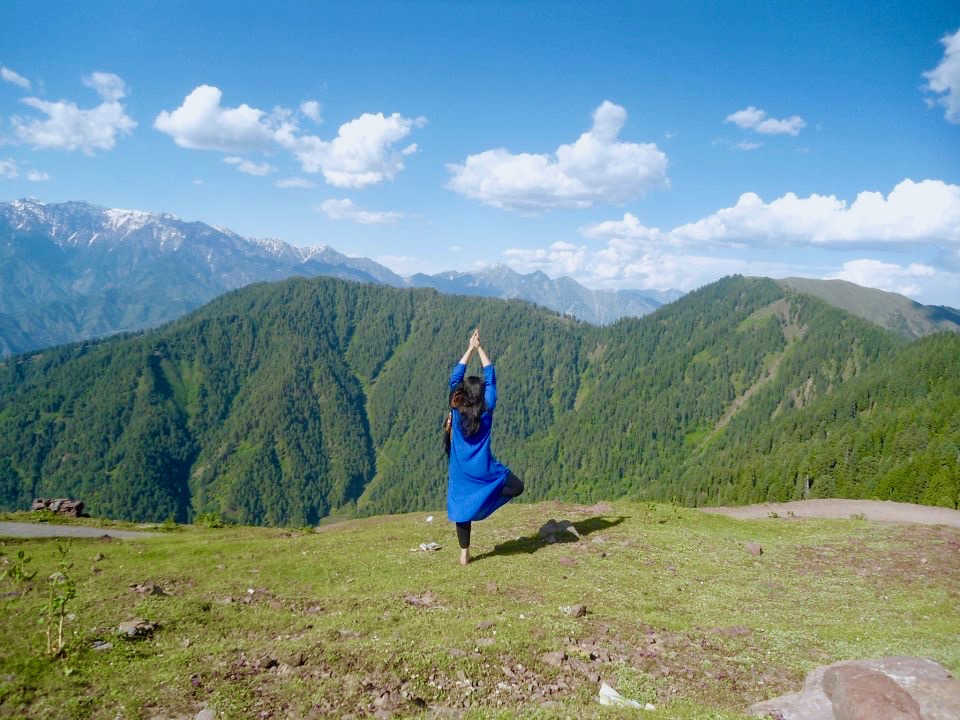When you think of Peru, your mind likely jumps to images of the outstanding World Heritage Site of Machu Picchu. The most popular hiking trail in the country is easily the Inca Trail, closely followed by numerous trails that are also dedicated to reaching the top of the ancient citadel. But if you listen to the whispers of the country’s locals or travellers well-versed in the region, you may catch wind of one of the most under-rated destinations in all of Peru: The Cordillera Blanca.
The Cordillera Blanca is a chain of mountains within the greater Andes mountain range. Its peaks reach over 6,000 meters above sea level and it’s home to the highest mountain in Peru, Huascaran, sitting as a snow-covered giant at 6,768 meters high. From river valleys and hot springs to over 700 glaciers, the Cordillera Blanca is easily one of Peru’s best-kept secrets, especially for hikers.
Whether you’re a hiker, photographer, backpacker, or adventure seeker, the Cordillera Blanca is a place of beauty you don’t want to miss. To make your trip planning a bit easier, here’s everything you need to know about hiking in and around the Cordillera Blanca.
What to expect from Cordillera Blanca
Witnessing the beauty of this region doesn’t come without its own set of unique challenges. This region is high in the Andes, meaning the air is thin, the wind is bitterly cold, and the terrain can be extremely unforgiving. That being said, the views along the way make the journey unmistakenly worthwhile. So, what can you expect form hiking in these parts?
1. You’ll start in Huaraz
Typically, hiking in the Cordillera Blanca starts in the village of Huaraz. With exception to a few “touristy” areas, this town is proudly authentic to Peru. The locals wear traditional Peruvian clothing, sell guinea pigs at the street markets, and very little English is spoken. The village is charming, welcoming, and boasts some of the most indescribable views you’ll ever see.
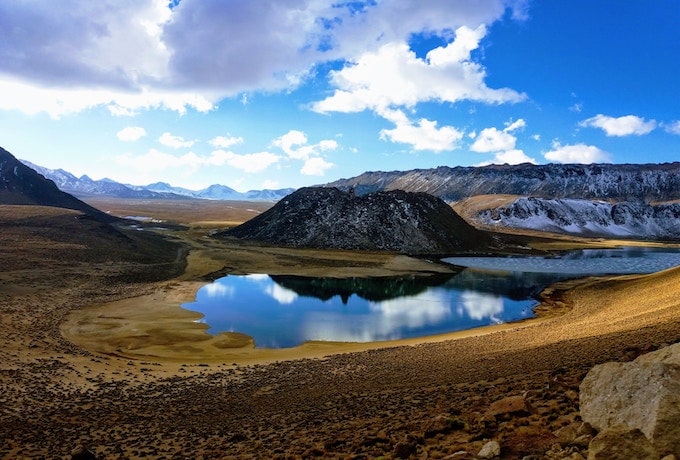
2. There are fewer tourists
Of course, there are still people like you visiting the area to take in the views and hike through the mountains. But when compared to the country’s other major tourists pulls, it remains virtually untouched. This creates one of the most authentic experiences one can have while hiking, allowing you to experience the wilderness without the distraction of major tourism crowds.
3. It’s great for any ability level
One of the most unique qualities of the Cordillera Blanca is its inclusive nature in terms of hosting hikers of any skill level. During your time in the region, you’ll see families with children, adult backpackers, experienced ice-hikers, and retirees alike. There’s something for everyone, regardless of your interest or hiking skill level.
4. It’s affordable
Compared to the other more popular hikes in Peru, hiking and lodging in the Cordillera Blanca are considerably more affordable. Everything from park entrance fees, gear rental, and expert guides – it’s all a fraction of the cost you would incur when hiking one of the more tourist-driven trails within Peru.
5. The altitude can affect you
As previously mentioned, the Cordillera Blanca is home to some of the highest mountains in Peru. Huaraz itself is over 3,000 metres high, meaning your body will need time to adapt to the altitude changes. Give yourself a few days to adjust to the altitude before planning any major hikes or treks. Chew on the cocoa leaves or opt for cocoa leaf tea. And if you start feeling ill, tell someone right away, because it could become serious rather quickly.

Guide to hiking Cordillera Blanca
When to go
While you can technically visit and hike any time of the year, there are a few months you’ll want to avoid and some peak seasons that will make your trip a lot easier to enjoy.
Peruvian Winter – most favourable
Winter in Peru covers the months between April and October and is widely considered the best time to visit. Known as the Andean Summer, these months have much less rain than the summer and are therefore favourable for hiking and other outdoor activities. Temperatures in the mornings and afternoons are cold, with an average of 0 ºC (32ºF). But once the sun reaches its peak at noon, temperatures can be as high as 20 ºC (68ºF).
Peruvian Summer – less favourable
Summer in Peru ranges from November till late March. These are the months that see the most rain, but typically warmer temperatures. Unlike lower altitude cities in Peru, the Cordillera Blanca region’s temperatures remain fairly steady all year round – it’s the rain that becomes an issue. During the summer months, the heavy rainfall makes hiking unpleasant and dangerous, as some trails flood and become much too dangerous to trek.
Getting there
Access to the Cordillera Blanca starts in Huaraz, so you’re going to need to get there from where ever you fly into. From Lima, Huaraz is located eight hours north if by road. For those on a budget, there are busses that leave regularly and will get you there without the cost of a flight. That being said, there is also an airport that offers daily flights from Lima, which can be a better option for those on time restrictions.
Hiking Permits
One thing you’ll need to consider before you head out for a day hike or week-long trek is your hiking permits. To enter Huascarán National Park you’ll need to pay the park permit fees. Depending on how many days you’ll be visiting, the fees change. You’ll also need to consider the exchange rate, which varies slightly month to month.
For international tourists, the fees are estimated to be:
- One day – 30 SOL – $9 USD
- Two to three days – 60 SOL – $18 USD
- Four or more days – 150 SOL – $45 USD
Booking lead time
It’s always recommended that you book tours as soon as you know the dates you’d like to hike. However, thanks to the lower amounts of tourism in the Cordillera Blanca, the lead times aren’t nearly as early as other Peruvian hikes. You’d likely be able to find some last minute hikes, but to ensure you get the dates you want with the company you want, booking last minute isn’t recommended.
Packing list for Cordillera Blanca
Hiking in the Cordillera Blanca is unique thanks to the diverse and quickly changing weather. The weather you encounter early in the morning will be very different than the weather at noon, meaning you’ll need the ability to warm up and cool down as the sun rises and sets. Pack the way you normally would for a hiking trip, but remember to add a few important items:
- Cocoa leaves (because if altitude sickness strikes, you’ll want to be able to handle it instead of letting it ruin your day)
- Lip balm (the dry, cold air in the mountains will crack your lips in a few minutes flat, so be prepared with lip balm that includes SPF)
- Toilet paper (toilet paper is a bit of a luxury in Peru, especially on the trails – better to be safe than sorry and bring some along)
- Layers (you’re going to be colder in the morning and warmer by mid-afternoon, so make sure you have multiple layers you can quickly and easily pull on and off again)
- Bug spray (unfortunately there are a number of insects around the Cordillera Blanca region, so bug spray is a must for keeping those little black flies off your back)
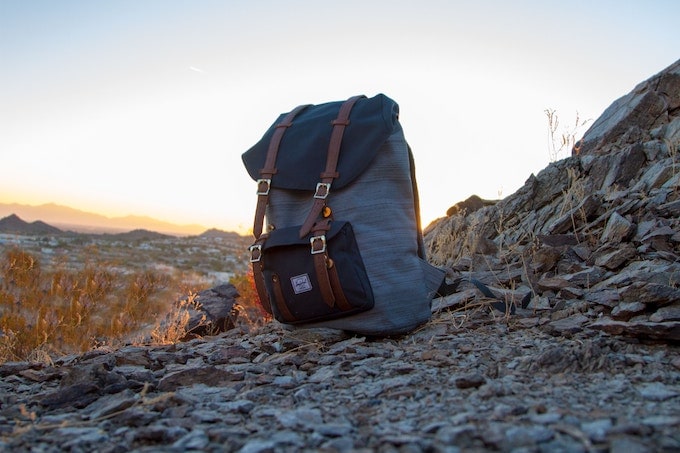
Popular Hikes in the Cordillera Blanca
The Cordillera Blanca is home to a number of amazing landmarks, all that make for epic day hikes or week-long treks. Here are a few of the most popular, ranging in length, difficulty, and interest:
Laguna 69
- Our pick: 69 Laguna
- Length: 1 -2 days
- Difficulty: Easy
The hike to Laguna 69 is probably the most popular hike in the area, thanks to its short length, affordability, beginner level, and outstanding views of Laguna Sesentinueve. This lake is one of 400 in Huascarán National Park but is easily one of the most beautiful. The famous crystal clear blue waters are undeniably dramatic against the charcoal grey mountainous backdrop, making it the ultimate photo opportunity in the park. While the trek itself isn’t considered challenging, hikers will need to prepare for the high altitude, meaning spending a few days in Huaraz is always recommended.
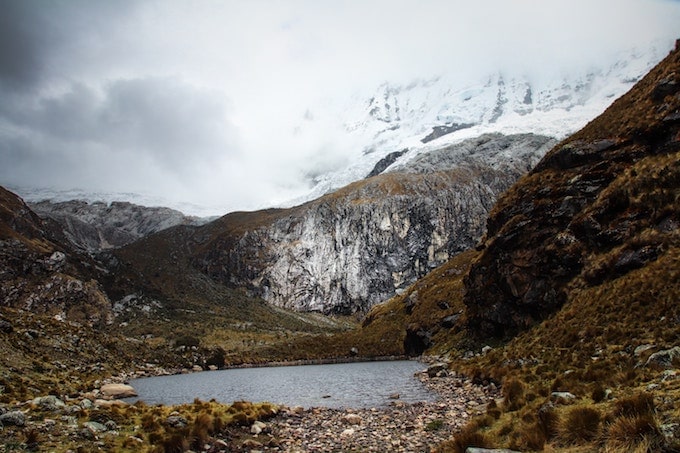
Cordillera Blanca Santa Cruz Trek
- Our pick: Cordillera Blanca – Santa Cruz Trek
- Length: 3 – 5 days
- Difficulty: Moderate
Another popular route through the Cordillera Blanca is the Santa Cruz trek. This trek typically takes between three and five days, depending on the places you’d like to see, your speed, and the route you take. This hike is hard and if you have little to no hiking experience it’s highly recommended that you invest in a guide or tour group. But as always, the work is well worth it. Rated as one of National Geographic’s “World’s Best Hikes” the Santa Cruz trek takes you through glacial lakes, majestic views of the Andes, and to one famous mountain, Artesonraju – “the Paramount Pictures Mountian”.
Huayhuash
- Our pick: Trekking Huayhuash
- Length: 8 – 12 days
- Difficulty: Hard
If you exclude hikes that involve ice climbing, the Huayhuash trek is considered the hardest in the Cordillera Blanca. This trek usually takes over a week, bringing you deep into the mountains with little to no civilization. Overnight temperatures fall to as low as -15ºC and heights reach upwards of 4,500m. Without any hiking experience, this trek will be extremely difficult, even with the help of a guide and donkeys. If you’re up for the challenge, this hike will give you a fresh perspective on the Andres, pushing you through snow-covered peaks, bright blue lakes, bubbling streams and an endless amount of flora and fauna.
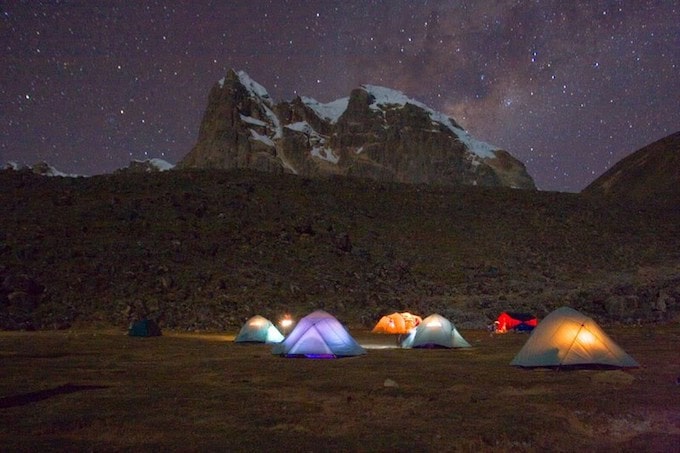
If you’re looking to get off the beaten path in Peru without sacrificing the amazing hiking and natural beauty the region is known for around the world, hiking the Cordillera Blanca is the perfect adventure for you. Whether you venture out on a day hike or sink your teeth into a multi-day adventure, you’re sure to have an incredible experience!
Have you been hiking in Peru? We’d love to hear about it in the comments!

